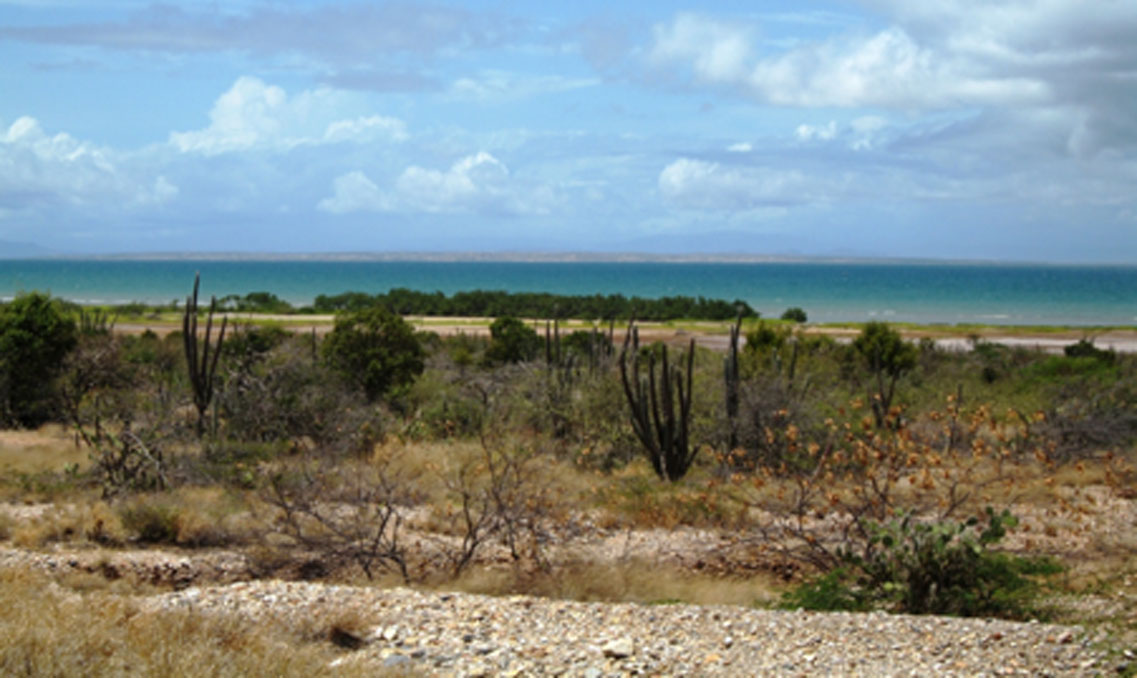Nueva Cádiz and the Pearls of Venezuela
South America is famous for many reasons and amongst history lovers, for its many lost and abandoned cities. Since they have been rediscovered, they are among some of the most remarkable archaeological remains in the world.
One of the most important historic sites in Venezuela is the ruined town of Nueva Cádiz, one of the first Spanish urban centers in the Americas.
The Prosperity and the Collapse of Nueva Cádiz
The settlement was established on the island of Cubagua, the smallest of the three islands of the Venezuelan state of Nueva Esparta, which lie off the Caribbean coast of Venezuela.
Although Cubagua is low-lying, arid and without fresh water, the waters around the island were rich in pearls. It was claimed by Christopher Columbus during his third voyage of discovery in 1498 and two years later the Conquistadors established a seasonal settlement.

Nueva Cádiz, 1523 (CC BY-SA 2.5)
The Spanish, as well as indigenous pearl divers and fishermen, lived on the islands. Under the guidance of Cristóbal Guerra, this temporary, yet prosperous camp, became known as Villa of Santiago. Thanks to the pearl industry, the economy grew.
In 1521 the Royal government granted a charter for a new town, the first town established by the Spanish in what is now Venezuela. It was inhabited all year round. The town was called New Cádiz and was inhabited by many Canary Islanders - some 1500 citizens at its peak.
Many natives, who worked as pearl divers and canoeists, lived in the settlement although not by choice. They were practically enslaved, and many were forcibly brought from other parts of the Caribbean. The town has become synonymous with the brutality of the Spanish Empire.
- Dark Mysteries of the Deep: Ancient Divers and their Dangerous Journeys
- Batman Existed in Mesoamerican Mythology and His Name Was Camazotz
- French Artifacts and Weapons Discovered in Ship Wreckage off Florida Coast

Map of Nueva Esparta with Cubagua lying south-west (lesniewski/ Adobe Stock)
The prosperity of the town proved to be fleeting as the oyster beds were depleted and the pearls were increasingly difficult to harvest. On top of this, the cost of maintaining the population was prohibitive as all the food and water had to be brought from the mainland. Moreover, new settlements were found on nearby islands.
In 1541 an earthquake and a tsunami devastated the island and it was largely abandoned with only a few dozen people remaining in Nueva Cádiz after the disaster. Some years later a group of French Huguenots, fleeing persecution at home, attacked the town, mistakenly believing it was still an important pearl center. Shortly after, the settlement was totally abandoned.
In its heyday, the town was so famous that a well-known glass bead (used in trade with the Amerindians) was named after it. Eventually Nueva Cádiz was largely forgotten and was only visited by the occasional pearl diver. Today the ruined town is a national monument.
The Remains of Nueva Cádiz
The ruined town overlooks the sea and remains of the original harbor are visible. Intact buildings no longer grace the site, which covers about 13 hectares, but many ruins can be seen, especially walls and foundations. The street plan, which was designed to shelter the inhabitants from the prevailing hot east and north winds, can still be made out.
The low walls of the main church Apostle Santiago, as well as a convent, can be seen. Undoubtably, the most impressive remains of Nueva Cádiz are those of the town hall, which once had a jail. Many of the walls are still standing and have interesting inscriptions and graffiti.
Getting to Nueva Cádiz and Staying Safe
The island of Cubagua is quite remote and can only be reached by a private boat as there is no public transport. The waters around Nueva Cádiz are popular with scuba divers and the area is recognized as being of great environmental importance.
While private boats can be chartered, visitors are expected to be environmentally aware and act in a responsible way. There is plenty of accommodation in the city of La Asunción, the capital of the state of Nueva Esparta. There is also a museum where artifacts from the abandoned town can be seen. As Cubagua is practically a desert island, the necessary precautions, such as enough water and a guide, may be essential.
Top image: The Island of Cubagua, Venezuela Source: garteneideschse/ Adobe Stock
By Ed Whelan
References
Duno-Gottberg, L., & Rivabella, P. E. (2009). Narrating from the Ruins:" Cubagua" and" La Galera de Tiberio" By Enrique Bernardo Nuñez. Journal of Caribbean Literatures, 6(2), 77-85
Available at: https://www.jstor.org/stable/40981276?seq=1#page_scan_tab_contents
Romero, A., Chilbert, S., & Eisenhart, M. G. (1999). Cubagua’s Pearl-Oyster beds: the first depletion of a natural resource caused by Europeans in the American Continent. Journal of Political Ecology, 6(1), 57-78
Available at: file:///C:/Users/board/Downloads/21423-40074-1-PB.pdf
Wing, E. S. (1961). Animal remains excavated at the Spanish site of Nueva Cádiz on Cubagua Island, Venezuela. Nieuwe West-Indische Gids/New West Indian Guide, 41, 162-165
Available at: https://www.jstor.org/stable/41848949?seq=1#page_scan_tab_contents



















